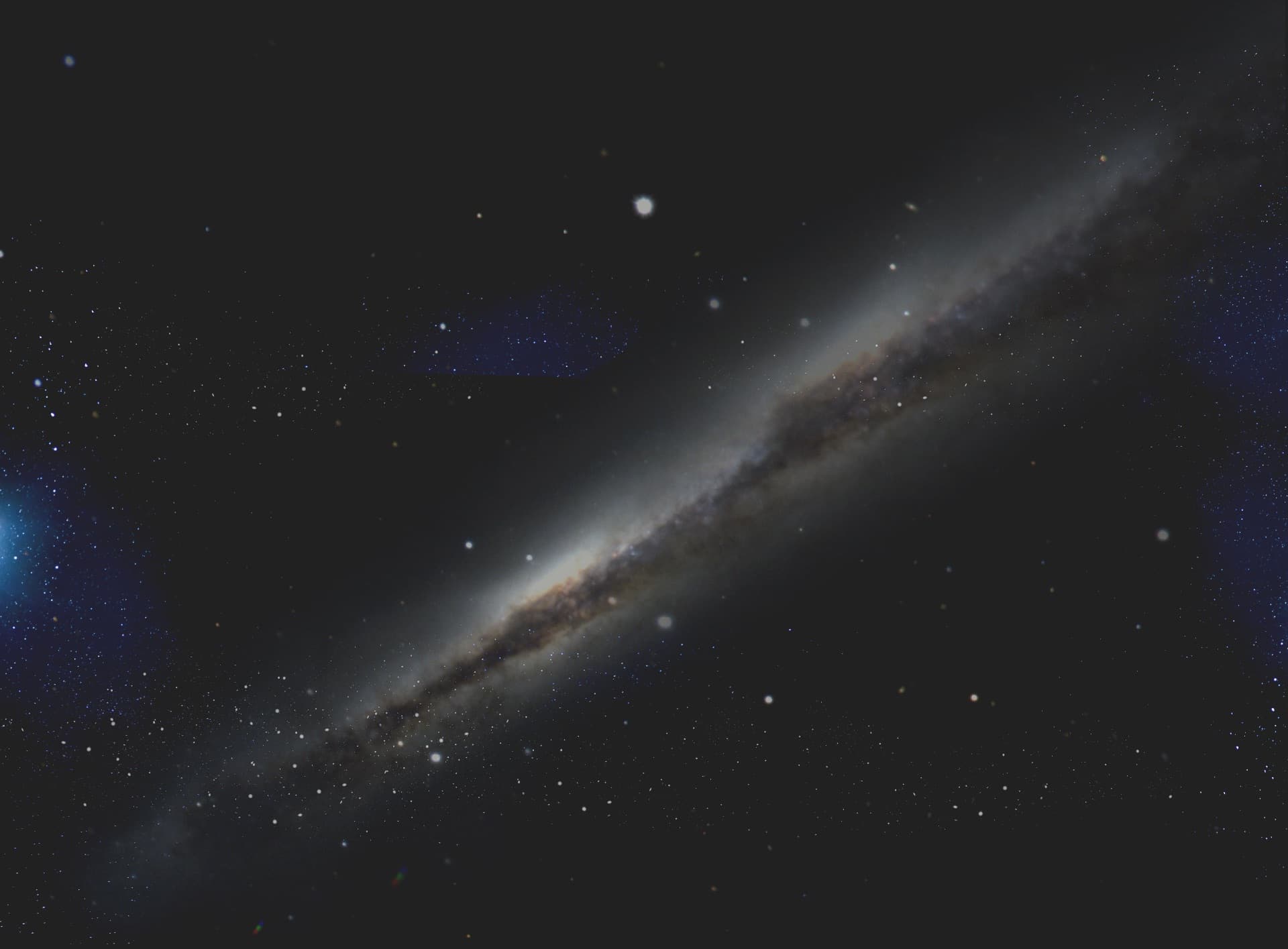This week, the Moon appears in the predawn sky, Mars is in a close conjunction with the Pleiades star cluster, and the planets Mercury, Jupiter and Saturn appear low above the horizon before dawn; Mercury and Jupiter appear in a very close conjunction – less than 1 degree apart, as they swap positions over the course of several days
- The Sky
- The Moon
- The Sun
- Asteroids
- Fireballs
- The Solar System
- Spacecraft News
- Exoplanets
- Aurora
- Light Pollution
- The Universe

The Moon appears near the star Spica high in the southwestern predawn sky on March 2nd.
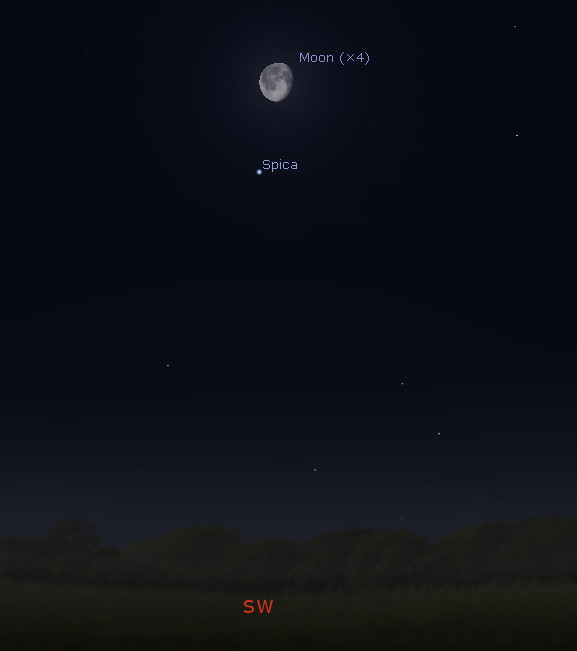
The Moon appears near the star Antares in the constellation Scorpius in the southern predawn sky on March 5th.
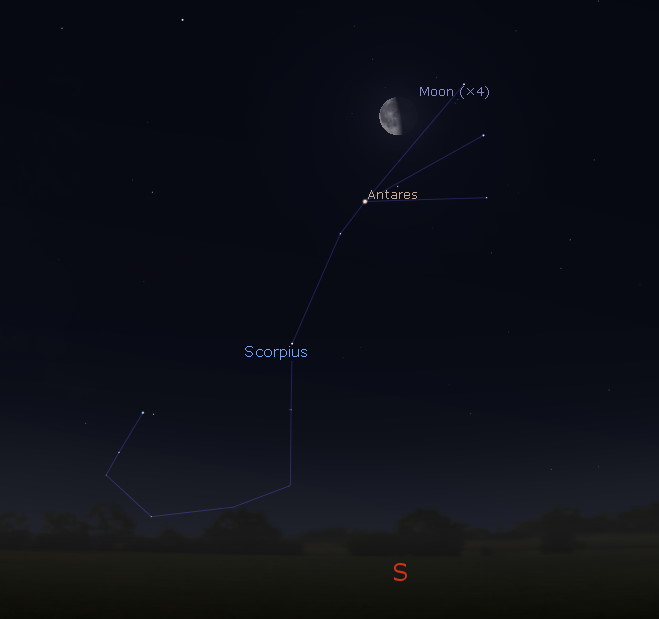
The Moon appears in the constellation Sagittarius in the south-southeastern predawn sky on March 7th.
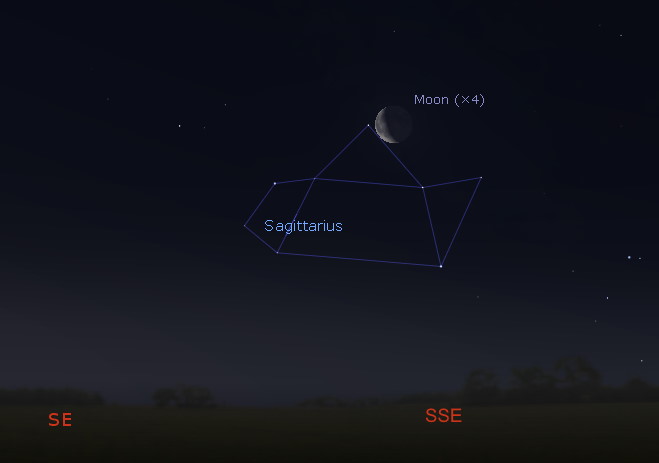
Mars and Uranus appear in the southwestern sky after sunset – Mars appears very close to the Pleiades star cluster all week.
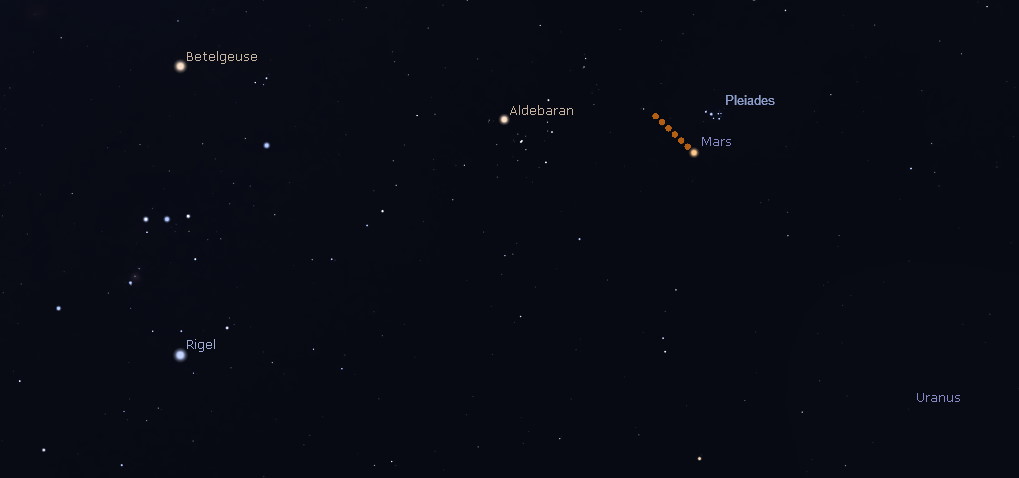
Here’s a close-up of the Mars-Pleiades conjunction:
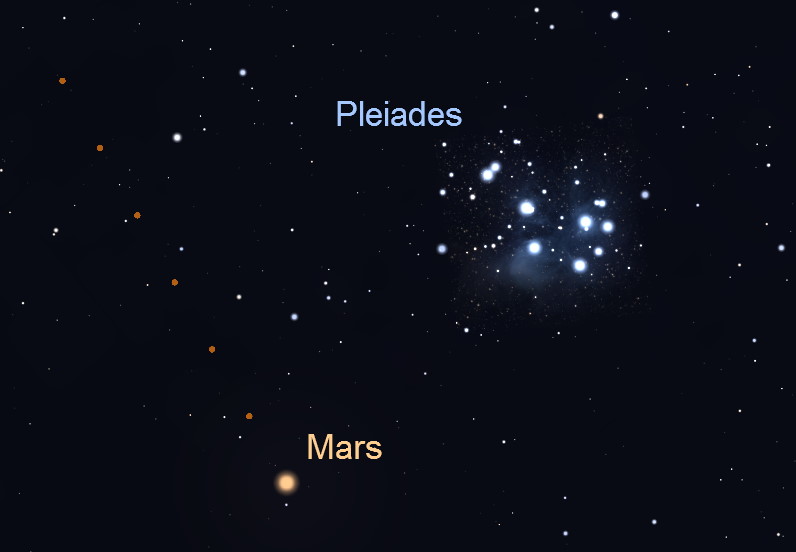
Jupiter, Mercury and Saturn appear low above the east-southeastern horizon before dawn this week; Jupiter and Mercury swapping positions by early next week.
Before sunrise on March 5th, Mercury and Jupiter appear less than a degree apart!
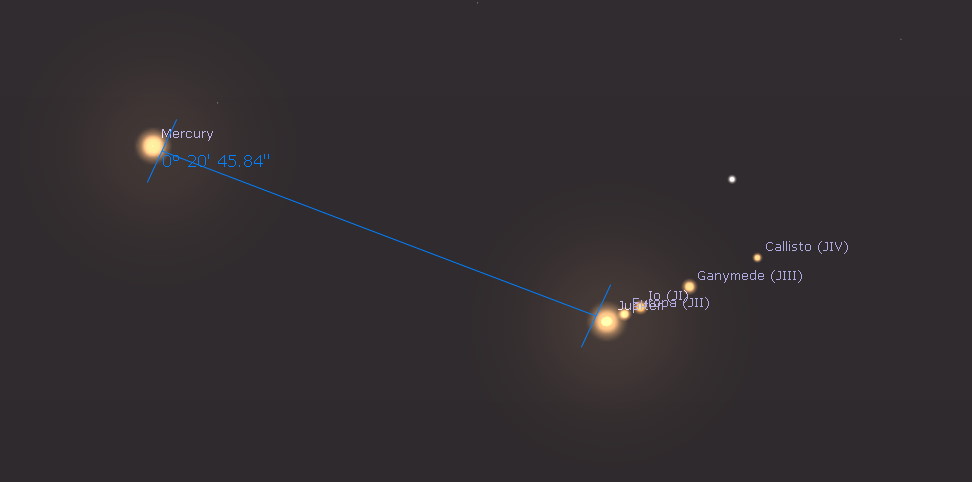
The waning crescent Moon appears in the southeastern predawn sky with the planets on March 8th.

Seen from Hamilton, New Zealand in the southern hemisphere, Jupiter, Mercury and Saturn appear to “point” the opposite direction from how they appear in the northern hemisphere – the planets also appear much higher above the horizon, so they should be easier to see in the southern hemisphere.
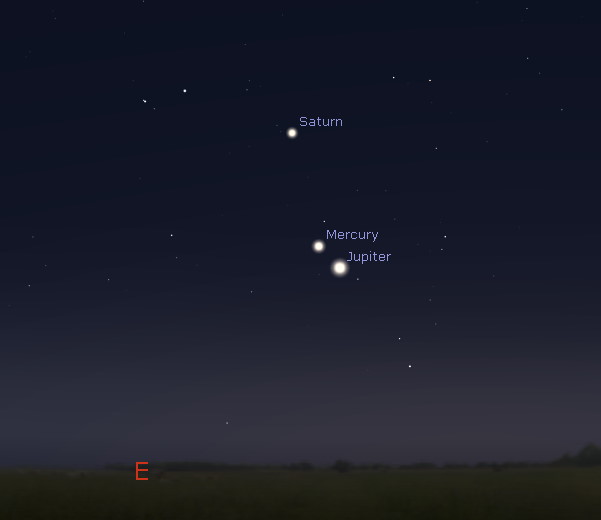

The Moon is a waning gibbous – rising after sunset, visible high in the sky after midnight, and visible to the southwest after sunrise.
The third quarter Moon occurs on March 5th – rising around midnight, and visible to the south after sunrise.
After March 5th, the Moon will be a waning crescent – visible low to the east before sunrise.

If you click on the Moon image above, or click this link, you will go to NASA’s Moon Phase and Libration, 2021 page – it will show you what the Moon looks like right now. If you click the image on that page, you will download a high-rez TIFF image annotated with the names of prominent features – helpful for logging your lunar observations!
Moon News:
 The Sun has been spot-free for one day – a sunspot may be emerging below the equator.
The Sun has been spot-free for one day – a sunspot may be emerging below the equator.
The northern coronal hole appears diminished from last week, the southern coronal hole remains huge, with a very large tendril stretching up towards the equator; several other coronal holes appear on the Sun’s face.
The Sun seen in 193 angstroms (extreme ultraviolet) March 1, 2021:
LOTS of prominence activity again over that last couple days – prominence are popping up all over!
The Sun seen in 304 angstroms (extreme ultraviolet) March 1, 2021:
You can view the Sun in near real-time, in multiple frequencies here: SDO-The Sun Now.
You can create your own time-lapse movies of the Sun here: AIA/HMI Browse Data.
You can browse all the SDO images of the Sun from 2010 to the present here: Browse SDO archive.
Solar Activity on Facebook – Run by Volunteer NASA/JPL Solar System Ambassador Pamela Shivak

Solar Corona
Solar wind speed is 589.5 km/sec, with a density of 13.2 protons/cm3 at 1154 UT.
Near real-time animation of the corona and solar wind from the Solar & Heliospheric Observatory (SOHO):

Sun News

Potentially hazardous asteroids: 2173 (updated 2021-03-02)
Total Minor Planets discovered (NASA): 1,065,732 (+5,740)
Total Minor Planets discovered (MPC): 1,044,734 (updated 2021-02-23)
Upcoming Earth-asteroid encounters:
| Asteroid |
Date(UT)
|
Miss Distance
|
Velocity (km/s)
|
Diameter (m)
|
| 2011 EH17 |
2021-Mar-02
|
9.6 LD
|
16.8
|
43
|
| 1999 RM45 |
2021-Mar-02
|
7.7 LD
|
20
|
408
|
| 2016 DV1 |
2021-Mar-03
|
2.1 LD
|
18.3
|
39
|
| 2020 SP |
2021-Mar-03
|
18.4 LD
|
3.9
|
13
|
| 2021 DE1 |
2021-Mar-03
|
4.4 LD
|
3
|
11
|
| 2021 DW1 |
2021-Mar-04
|
1.5 LD
|
5.4
|
33
|
| 2021 CN3 |
2021-Mar-05
|
11.2 LD
|
3.8
|
20
|
| 2021 CF8 |
2021-Mar-05
|
11.5 LD
|
11.8
|
54
|
| 2021 DL |
2021-Mar-08
|
11.8 LD
|
5.8
|
34
|
| 535844 |
2021-Mar-10
|
14.2 LD
|
7.3
|
162
|
| 2021 CF6 |
2021-Mar-10
|
4.2 LD
|
8.4
|
62
|
| 2020 FM |
2021-Mar-10
|
18.2 LD
|
13.3
|
56
|
| 2011 YW10 |
2021-Mar-12
|
19.8 LD
|
13.2
|
45
|
| 2021 CX8 |
2021-Mar-15
|
18.1 LD
|
6.6
|
52
|
| 2021 DT |
2021-Mar-16
|
18.3 LD
|
7.3
|
34
|
| 231937 |
2021-Mar-21
|
5.3 LD
|
34.4
|
1024
|
| 2021 CX5 |
2021-Mar-27
|
7.7 LD
|
5.6
|
48
|
| 2020 GE |
2021-Mar-27
|
12.7 LD
|
1.5
|
8
|
| 2019 GM1 |
2021-Mar-31
|
15.1 LD
|
3.9
|
14
|
| 2015 MB54 |
2021-Apr-06
|
13.6 LD
|
3.7
|
57
|
| 2020 GE1 |
2021-Apr-07
|
12.2 LD
|
4.2
|
14
|
| 2014 FO38 |
2021-Apr-07
|
16.8 LD
|
8.3
|
20
|
| 2020 UY1 |
2021-Apr-15
|
16 LD
|
8.7
|
22
|
| 2017 HG4 |
2021-Apr-16
|
7.6 LD
|
4.1
|
10
|
| 2020 HE5 |
2021-Apr-17
|
8.5 LD
|
4.3
|
10
|
| 2019 HQ |
2021-Apr-20
|
14.8 LD
|
8.8
|
20
|
| 2020 HO5 |
2021-Apr-22
|
16.5 LD
|
3.3
|
7
|
| 2019 PS1 |
2021-Apr-23
|
14.5 LD
|
10
|
16
|
| 2016 QE45 |
2021-Apr-24
|
13.2 LD
|
15.3
|
162
|
| 2015 HA177 |
2021-Apr-26
|
18.7 LD
|
8.7
|
10
|
| 2019 HF4 |
2021-Apr-26
|
7.8 LD
|
6.8
|
11
|
Notes: LD means “Lunar Distance.” 1 LD = 384,401 km, the distance between Earth and the Moon. Red highlighted entries are asteroids that either pass very close, or very large with high relative velocities to the Earth. Table from SpaceWeather.com
Asteroid News:
 On March 1, 2021, the NASA All Sky Fireball Network reported 2 fireballs!
On March 1, 2021, the NASA All Sky Fireball Network reported 2 fireballs!
(2 sporadics)
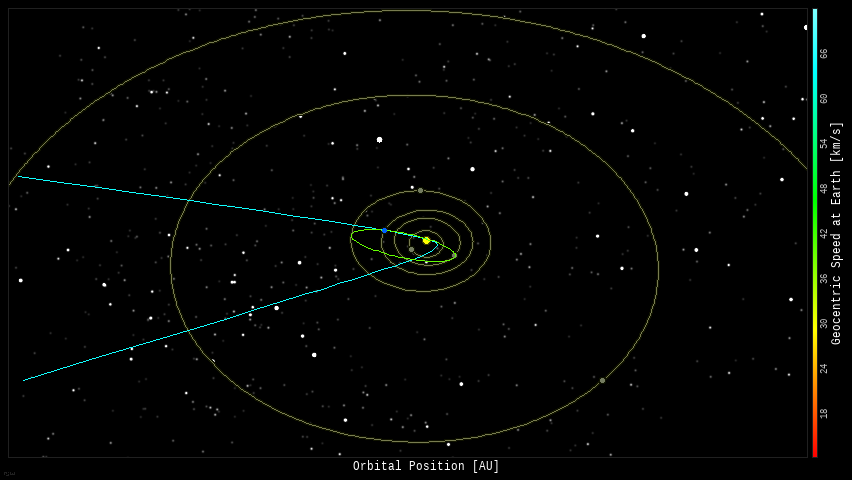
Fireball News
If you see a bright meteor or a fireball, please REPORT IT to the American Meteor Society and the International Meteor Organization!

Position of the planets and several spacecraft in the inner solar system:
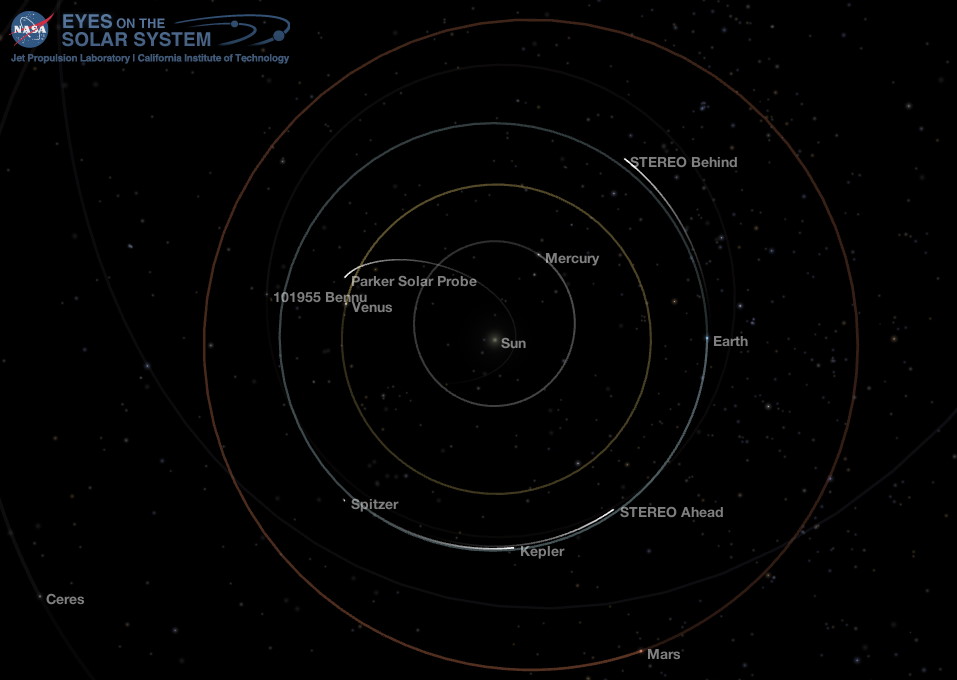
Position of the planets in the middle solar system:

Position of the planets, dwarf planets and some transneptunian objects in the outer solar system:
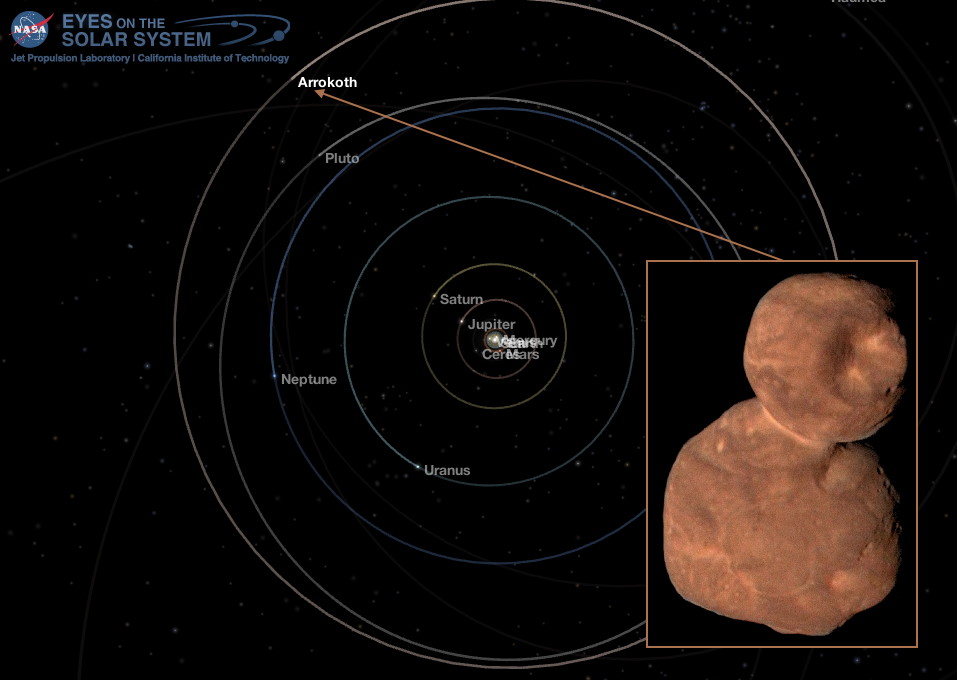

Mars Perseverance Rover:
International Space Station:
HiRISE – on the Mars Reconnaissance Orbiter:
OK… I HAD 5 pair of red/blue 3D glasses BEFORE I moved… where are they now? Who knows?
Mary W. Jackson NASA Headquarters Building in Washington!
Not a spacecraft, but hey!
Hubble Space Telescope:
Climate:
See a list of current NASA missions here: https://www.jpl.nasa.gov/missions/?type=current

ex·o·plan·et /ˈeksōˌplanət/, noun: a planet orbiting a star other than the Sun.
Data from the NASA Exoplanet Archive
* Confirmed Planets Discovered by TESS refers to the number planets that have been published in the refereed astronomical literature.
* TESS Project Candidates refers to the total number of transit-like events that appear to be astrophysical in origin, including false positives as identified by the TESS Project.
* TESS Project Candidates Yet To Be Confirmed refers to the number of TESS Project Candidates that have not yet been dispositioned as a Confirmed Planet or False Positive.
Exoplanet News

Not Aurora, but light pillars, taken by a buddy!


SpaceWeather.com Realtime Aurora Gallery: https://spaceweathergallery.com/aurora_gallery.html
 At last night’s meeting of the Warren Astronomical Society, President Diane Hall mentioned that she has spoken with the Detroit Audubon Society about planning a Dark Sky event on Belle Isle! I’m pretty sure that several member clubs of the Great Lakes Association of Astronomy Clubs will want to participate. More info as this develops!
At last night’s meeting of the Warren Astronomical Society, President Diane Hall mentioned that she has spoken with the Detroit Audubon Society about planning a Dark Sky event on Belle Isle! I’m pretty sure that several member clubs of the Great Lakes Association of Astronomy Clubs will want to participate. More info as this develops!
Visit an International Dark Sky Park: https://www.darksky.org/our-work/conservation/idsp/parks/
For Teachers:
Check out NASA’s Interactive “Visible Earth” website – explore real-time climate data, and the satellites observing the Earth!

Hubble: Beautiful Universe – The Pillars of Creation
This one is my mother in-law’s favorite!
These towering tendrils of cosmic dust and gas sit at the heart of M16, or the Eagle Nebula. The aptly named Pillars of Creation, featured in this stunning Hubble image, are part of an active star-forming region within the nebula and hide newborn stars in their wispy columns.
Although this is not Hubble’s first image of this iconic feature of the Eagle Nebula, it is the most detailed. The blue colors in the image represent oxygen, red is sulfur, and green represents both nitrogen and hydrogen. The pillars are bathed in the scorching ultraviolet light from a cluster of young stars located just outside the frame. The winds from these stars are slowly eroding the towers of gas and dust.
Stretching roughly 4 to 5 light-years, the Pillars of Creation are a fascinating but relatively small feature of the entire Eagle Nebula, which spans 70 by 55 light-years. The nebula, discovered in 1745 by the Swiss astronomer Jean-Philippe Loys de Chéseaux, is located 7,000 light-years from Earth in the constellation Serpens. With an apparent magnitude of 6, the Eagle Nebula can be spotted through a small telescope and is best viewed during July. A large telescope and optimal viewing conditions are necessary to resolve the Pillars of Creation. – NASA.
Stay safe, be well, and look up!
Software Apps used for this post:
Stellarium: a free open source planetarium app for PC/MAC/Linux. It’s a great tool for planning observing sessions. A web-based version of Stellarium is also available.
Section header image credits:
The Sky – Stellarium / Bob Trembley
Observing Target – Turn Left at Orion / M. Skirvin
The Moon – NASA/JPL-Caltech
The Sun – NASA/JPL-Caltech
Asteroids – NASA/JPL-Caltech
Fireballs – Credited to YouTube
Comets – Comet P/Halley, March 8, 1986, W. Liller
The Solar System – NASA Eyes on the Solar System / Bob Trembley
Spacecraft News – NASA Eyes on the Solar System / Bob Trembley
Exoplanets – Space Engine / Bob Trembley
Light Pollution – NASA’s Black Marble
Aurora – Bob Trembley
The Universe – Universe Today



